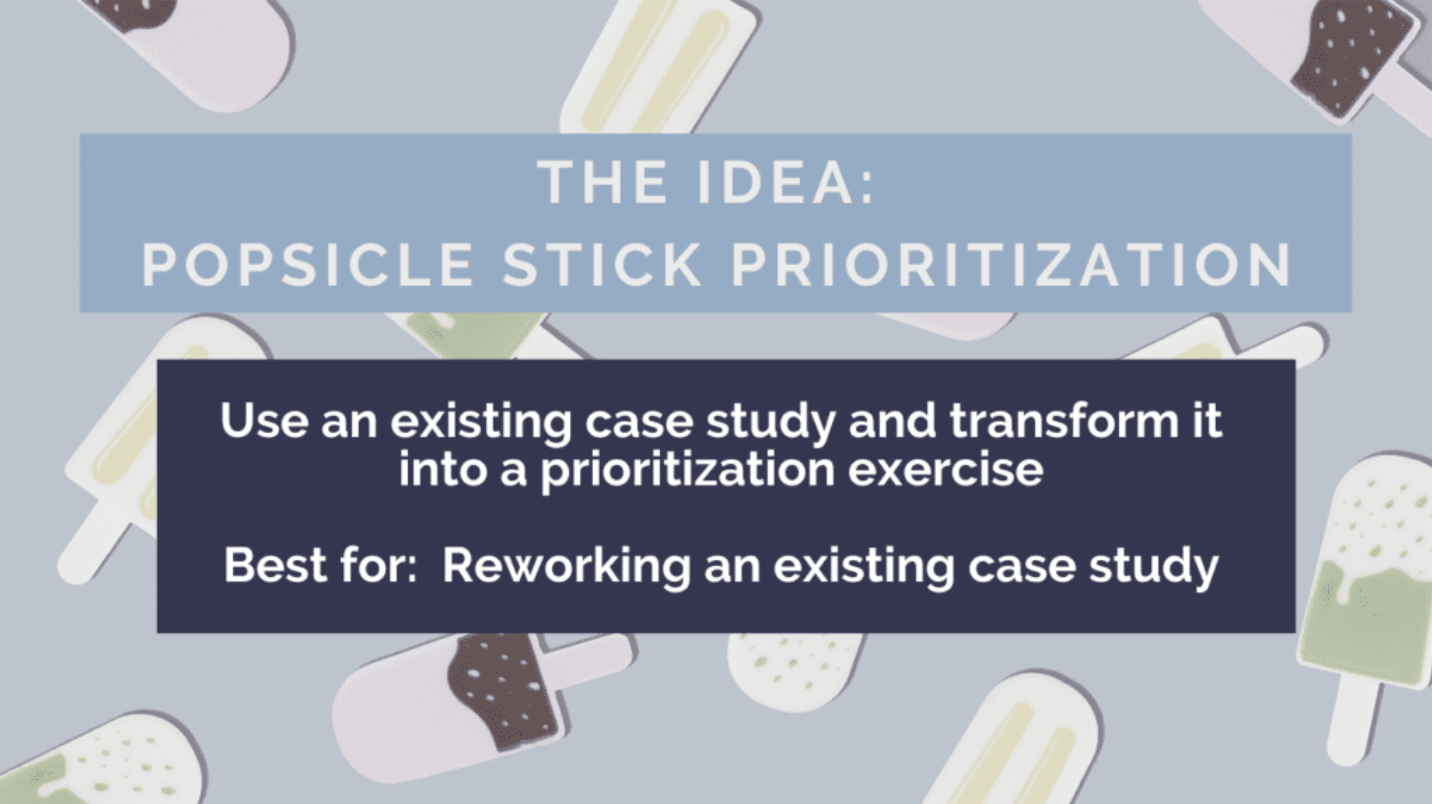
Thank you to Martha Johnson, MSN, RN, CEN for contributing this post, and making her practical and innovative strategies to teach and develop clinical judgment available on KeithRN! I support and strongly commend Martha’s strategies, tools, and her website BreakoutRN, which has many resources and additional strategies to make learning active and get student nurses thinking.
An essential nursing skill in the current healthcare environment is to prioritize effectively. Unfortunately, this does not just apply to which patient to see first. It goes far beyond – including which tasks to delegate to healthcare personnel, which assessments require immediate follow-up, and using resources competently. As educators, we should offer our students multiple opportunities to practice within a nursing prioritization scenario before they are faced with these decisions in practice.
The Popsicle Stick Prioritization 🍡 activity is excellent for individuals or small groups and gives students the opportunity to “vote” on their highest priority. And it can be a simple add-on to any case study you already use in class so it is minimal work to implement.
Supplies Needed for Popsicle Stick Prioritization
You will need a package of colored popsicle sticks, bags/baskets, and some markers/pens. You could use plain popsicle sticks, but I find if you are prioritizing more than one category, it can get confusing without the colors. Here is an example of what you would need.
How to Transform an Existing Case Study into a Nursing Prioritization Scenario
Let’s check out this example:
You are covering GI bleed in your theory course. You have an excellent case study (maybe a practice-based, clinical reasoning case study from KeithRN 😊). First, present the students with only the “background” and “vitals.”
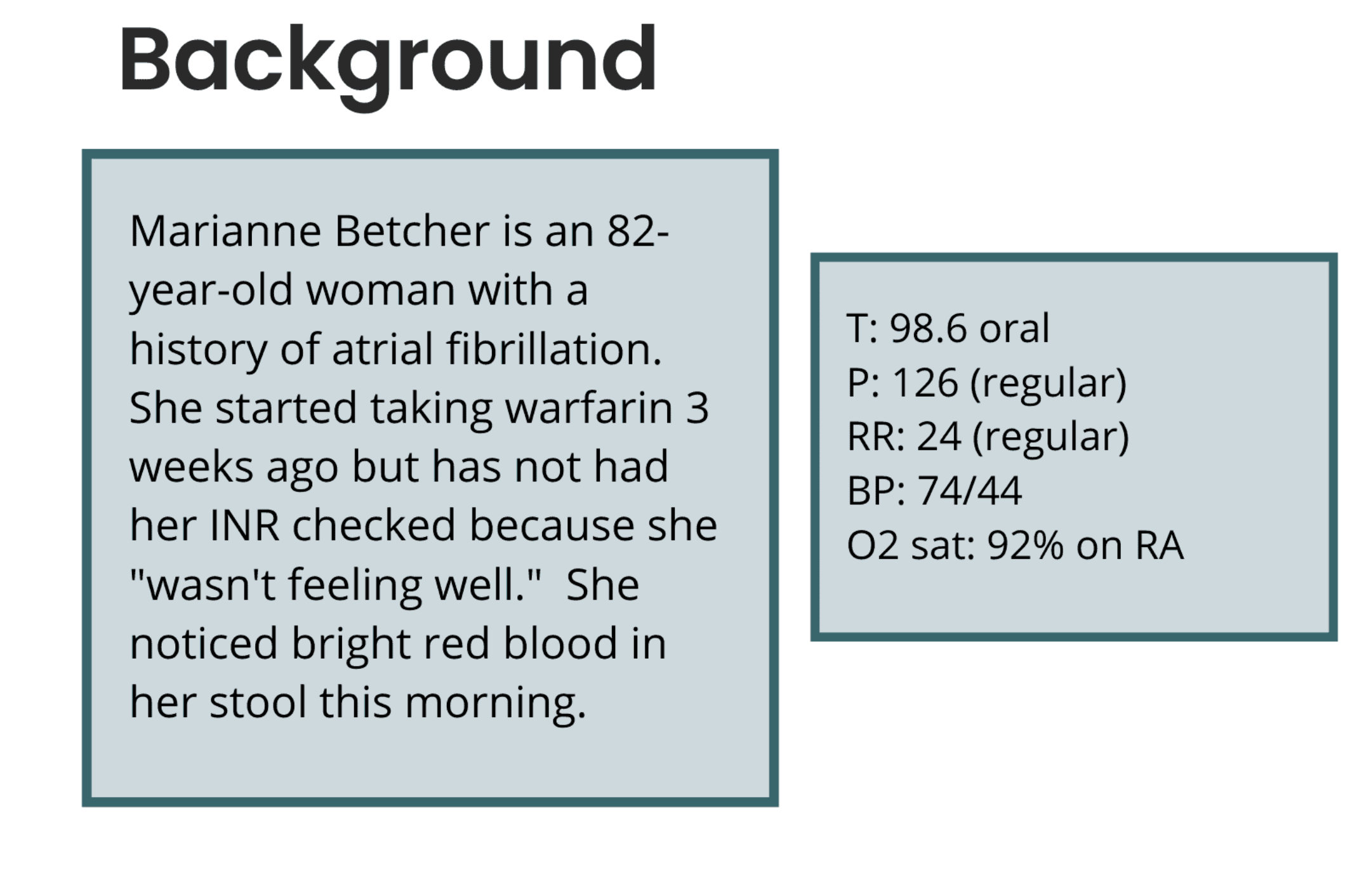
Next, magically turn the case study into a nursing prioritization scenario. Ask the students to find the corresponding colored popsicle stick for “vital signs” (in this case, it is RED). Everyone grabs their RED popsicle stick. Next, instruct the students to write on the stick what they believe to be the priority, most important, must-do-something-about-this vital sign. If you have enough sticks, everyone can write independently, or you can have them discuss in small groups.
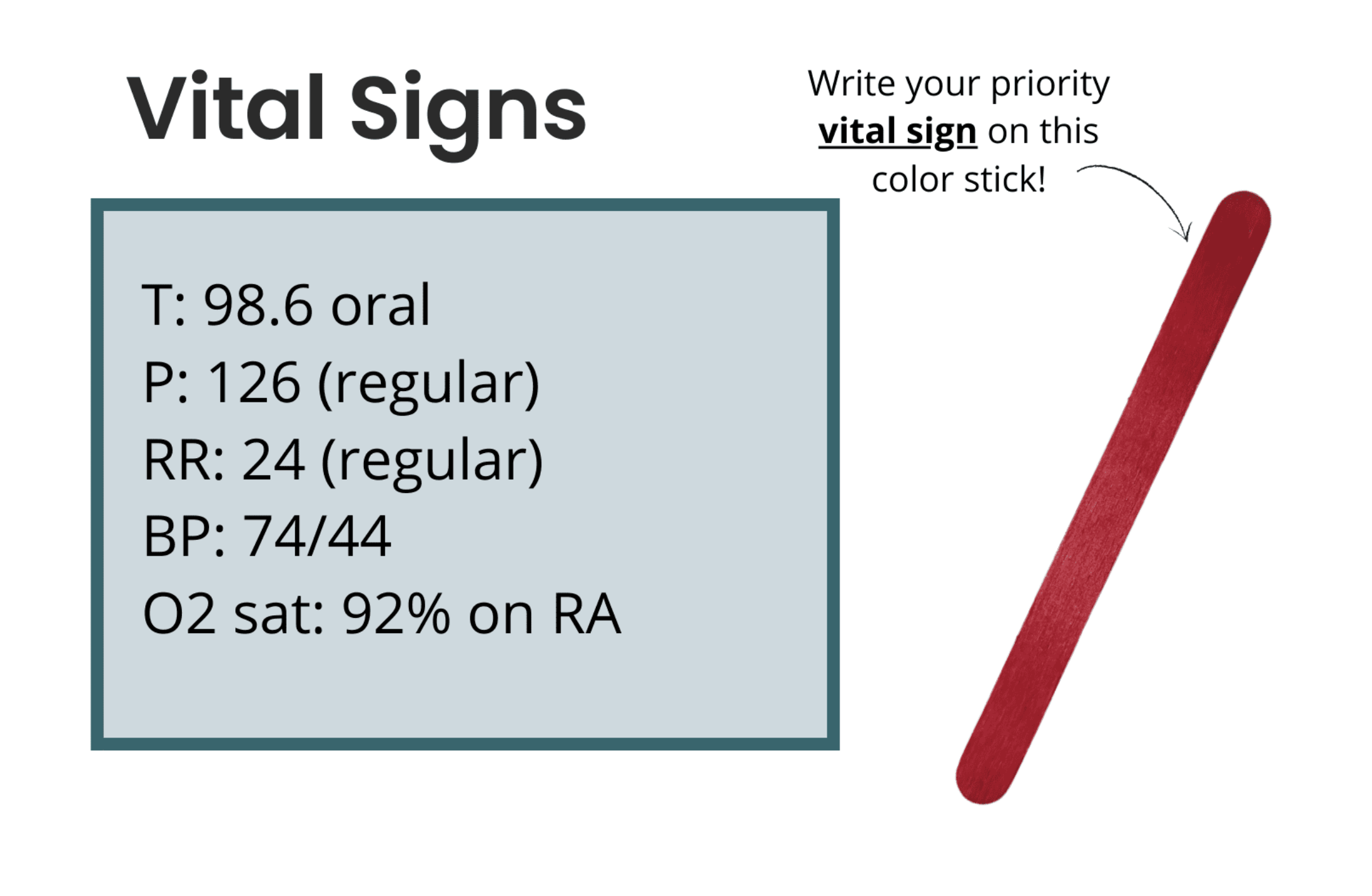
Now, you can continue this process for various categories using a different color popsicle stick for each. Here are a few ideas:
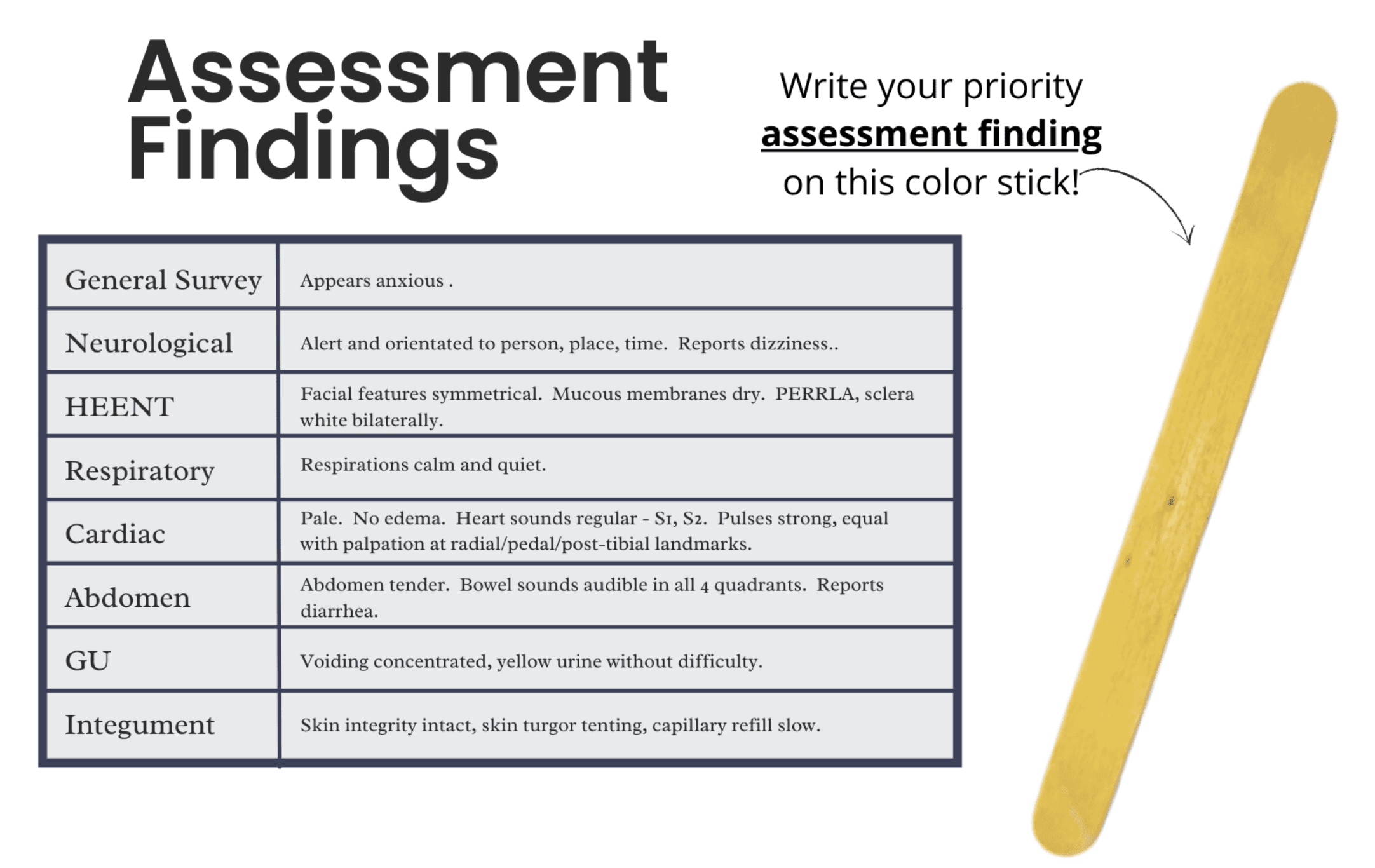
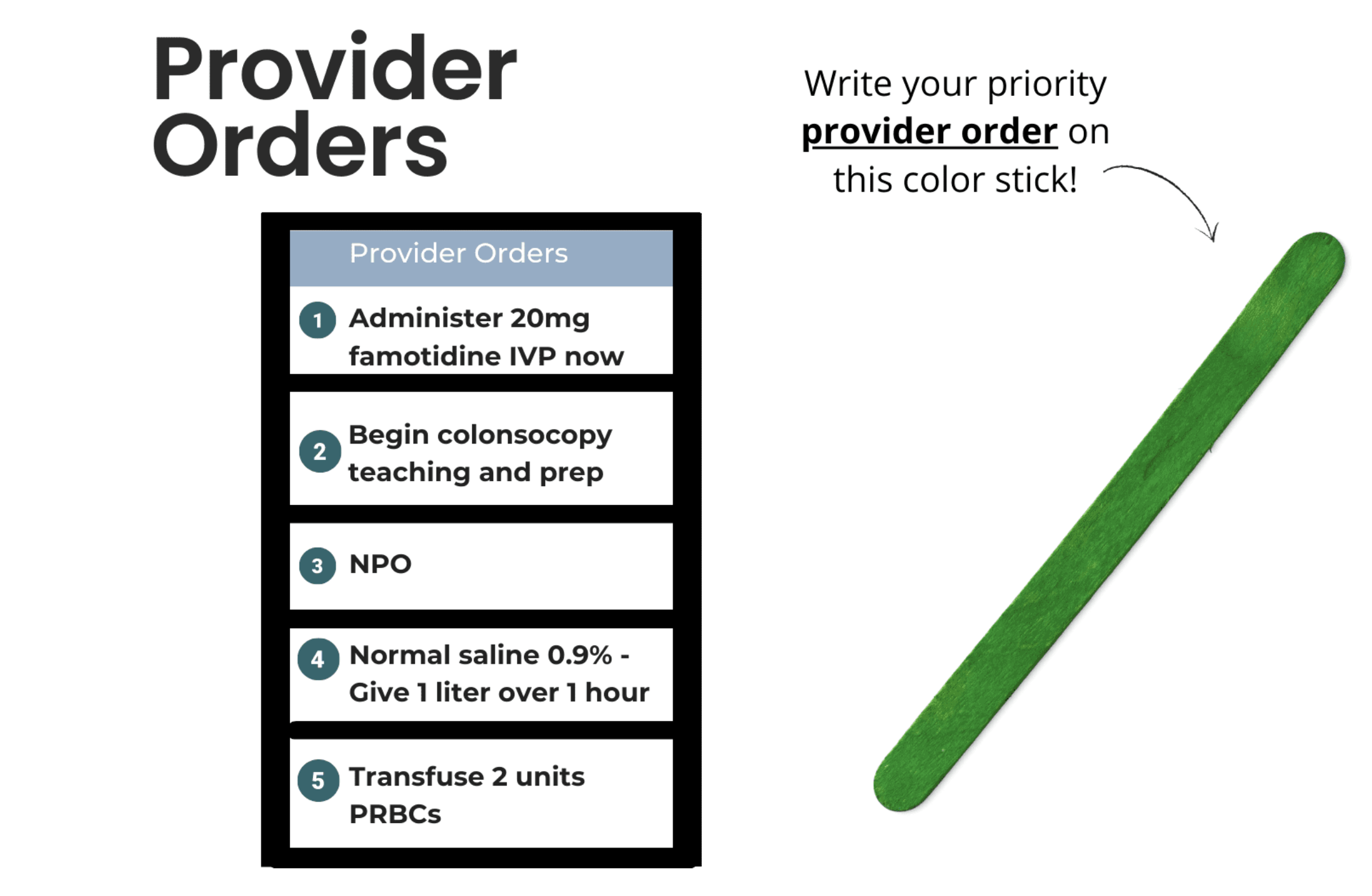
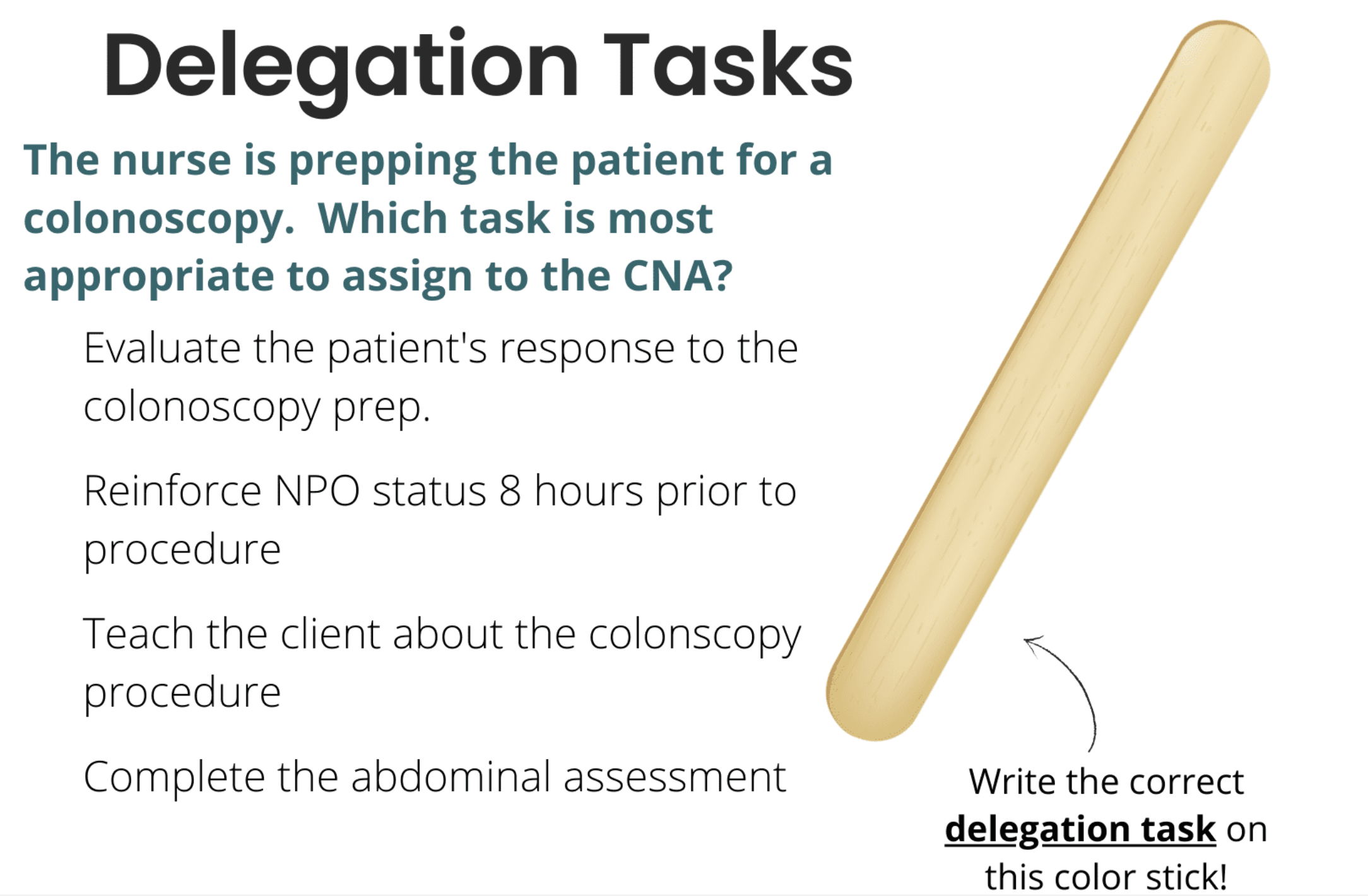
Other Ideas
- Which patient to see first
- Change in condition
- What information support personnel should report
- What question is most important to ask a provider
- Lab Values
When they have settled on an answer for each topic, have the group representative bring up their stick and drop it into the “appropriate bag.
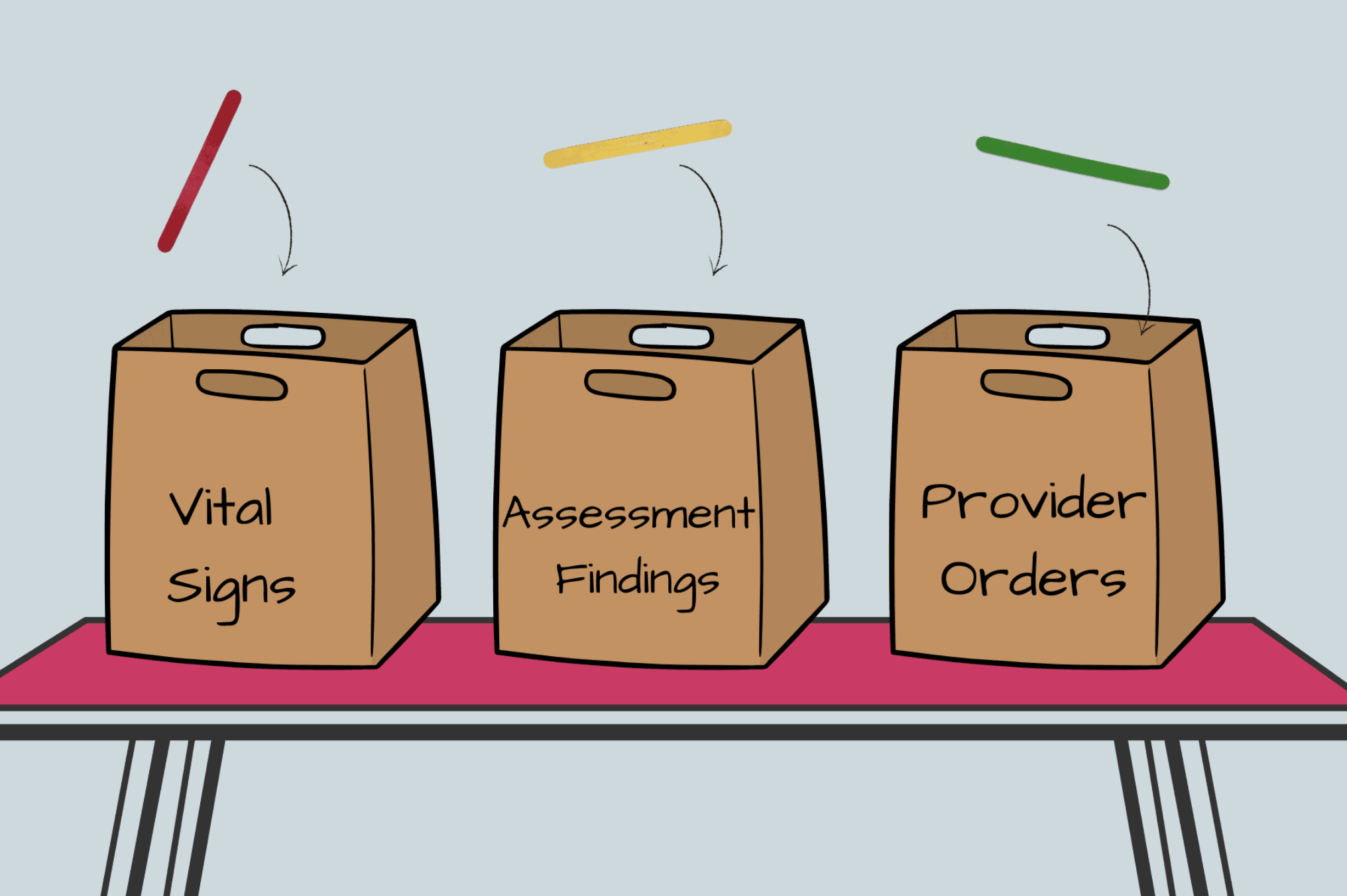
Once all the student groups have voted, there are a few ways to debrief the scenario. 👩🏾🏫
- The instructor can go through the votes, showing students the different votes and asking for supporting rationale.
- You can hand out the bags to the student groups to go through the votes. They will have to decide on the correct response and provide the supporting rationale to the large group. They may see votes different from their own, which will indeed generate great discussion!
Looking to use these images for your own classroom or as instructions. You can access the template HERE.
More options to include a Nursing Prioritization Scenario Using Popsicle Stick Prioritization
Using the red, yellow, and green popsicle sticks, create a stoplight color theme prioritization. For example, with assessment findings, write down one “red flag” 🚩on the red stick, one “continue to monitor” 🟡 finding on the yellow stick, and one “nice to know” ✅ finding on the green stick. Then, have students vote by putting all of the sticks into the assessment bag and sorting them by color in the debriefing session.
Online Learners – How to Implement
For online learners, you can modify this activity using highlighting text tools. First, give students the case study. Next, using this highlighter tool in Word or your LMS, have them highlight priority information in “RED”. Use a different color for nice-to-know or continue to monitor. Finally, students can post their highlighted priorities on a discussion board and review each other’s responses.
This activity is best for . . .
…Adding active learning to a current case study. It is incredible how a simple prop can add depth to a discussion! Also, just the tiny addition of physical movement 🏃🏾♀️to bring the popsicle sticks up to the front of the classroom is fantastic! Using it with an existing case study offers students the opportunity to practice a nursing prioritization scenario without extra work on the instructor’s part.
Conclusion
Providing the opportunity to think through a nursing prioritization scenario is an excellent way for students to practice these skills in theory and clinical. We need to include opportunities for students to learn not only which patient to see first, but also how to delegate, use resources effectively, prioritize assessment findings and understand which orders to complete first.
There are loads of other ideas around the Idea Bank if you are looking for other active learning techniques!
Martha Johnson, MSN, RN, CEN, is the founder of Breakout RN, a company she created to empower nurse educators to successfully transition from lecture to active learning. She believes active learning does not have to be hard or overwhelming, just take it one activity at a time.
The Ultimate Solution to Develop Clinical Judgment Skills
KeithRN’s Think Like a Nurse Membership
Access exclusive active learning resources for faculty and students, including KeithRN Case Studies, making it your go-to resource.



